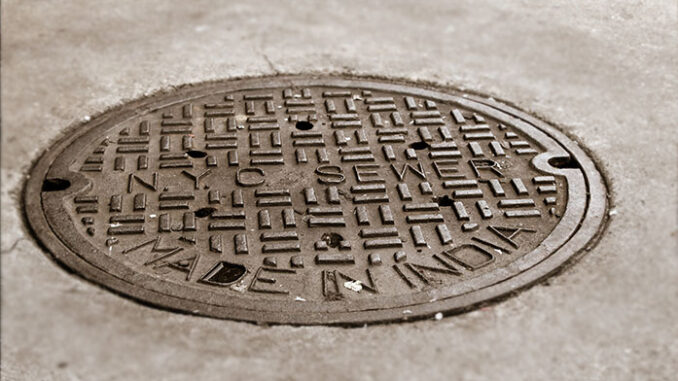
The title of a recent Wall Street Journal article asked the question, “Will Trump’s Trade War Break America’s Addiction to Cheap Stuff?”
The article included some statistics that, if true, suggest that Americans have taken mass consumerism to an extreme. For example, it claimed that people wear an article of clothing only seven times before discarding it or giving it away.
When I was a kid, it seemed that my mom and other moms in the hood didn’t discard kids’ pants until they had been patched at least seven times. Now, unbelievably, it’s fashionable to buy jeans that come pre-ripped. Maybe the next fashion will be new shoes with holes in the soles.
The article spotlighted spendthrift idiots who are evidently not ashamed to have their idiocy detailed in the WSJ, along with their photo. The following is what the WSJ said about one of them:
In 2024, the 35-year-old placed 144 Amazon orders for everything from a flimsy hand towel holder to a multicolored pack of eight Apple watch bands that she had to cut to fit her wrist. She bought a package of influencer-recommended hydrating face masks (which made her break out) from the TikTok shop. And she ordered a dozen ill-fitting vacation outfits on Shein.
Then there are the greater idiots who follow the idiots on social media. The article mentioned a high school senior who had 6.8 million lemmings, er, followers, of her shopping splurges. The article didn’t say whether her mother buys pre-ripped jeans.
Concerns about mass consumerism aren’t new. Unmentioned in the article was John Kenneth Galbraith’s bestselling book, The Affluent Society, which was published in 1957 and republished a few times thereafter.
The book’s main thesis was that the US had become a consumption society instead of an investment society, meaning a society that spent too much on consumer goods and not enough on infrastructure, education, poverty reduction, and other social needs.
Today, the US is seen as having a consumer economy while China is seen as having a production economy, built on the foundation of the high savings rate of the Chinese people. We even lecture the Chinese that they should be more like us.
Galbraith wrote his book before the Great Society, the War on Poverty and a myriad of new federal programs and agencies—and before Daniel Patrick Moynihan presciently warned in his writings and books about poorly designed welfare programs exacerbating certain social ills instead of remediating them.
Since 1957, per-student education spending has increased nearly three-fold in real terms, with little effect on student scores. Spending on social programs, subsidies and transfer payments was roughly $15 billion in 1957 and is roughly $3.4 trillion today, as detailed by the St. Louis Fed. It sure seems as if the US has invested in education, poverty reduction, and other social needs, funded to a large extent by deficit spending, thus resulting in an unsustainable national debt.
Was Galbraith wrong in his prognosis? Not in the sense that Americans want their cake and eat it too. They want both high social spending and high consumer spending, without the personal and national means to pay for both.
A book in a similar vein as Galbraith’s book was also published in 1957: The Hidden Persuaders, by Vance Packard. A review in the New Yorker said: “A brisk, authoritative and frightening report on how manufacturers, fundraisers and politicians are attempting to turn the American mind into a kind of catatonic dough that will buy, give or vote at their command.”
In 1964, Packard published another book, The Naked Society, in which he criticized advertisers’ unfettered use of private information in consumer advertising and marketing.
He’s lucky he didn’t live to see the day when Google and other so-called tech companies became ultra-profitable behemoths by spying on people. Americans wouldn’t allow creepy-looking guys to follow them around in a library or bookstore to see what their interests are, in order to bombard them with targeted ads. But for some inexplicable reason, Americans are okay if the spying is done electronically by creepy-looking guys.

At the same time, paradoxically, Americans are barraged with privacy notifications in five-point type and officious language as undecipherable as Egyptian hieroglyphics. They can’t even go to a podiatrist for an in-grown toenail without signing a privacy form. Then, in contravention of the privacy Kabuki, their medical information is shared with a faceless insurance company and a faceless government.
There was a time in antiquity, when I was a kid, that my mom would take me to see Dr. King, who had one employee, a nurse who looked like Nurse Ratchet in “One Flew Over the Cuckoo’s Nest.” There were no clerks processing red tape and no privacy forms. Mom would pay in cash or check, and information wasn’t sent to a higher authority, because there wasn’t one. Medical care was considered a private matter between a patient and a doctor. How quaint is that?
Today, if you were to do an internet search on hemorrhoids, Google CEO Sundar Pichai would immediately know about it and send you an ad for Preparation H. How creepy is that?
Judging by the crap that flows through the internet and the sewer of social media, America has gone from an affluent society to an effluent one.
Mr. Cantoni can be reached at [email protected].

Be the first to comment